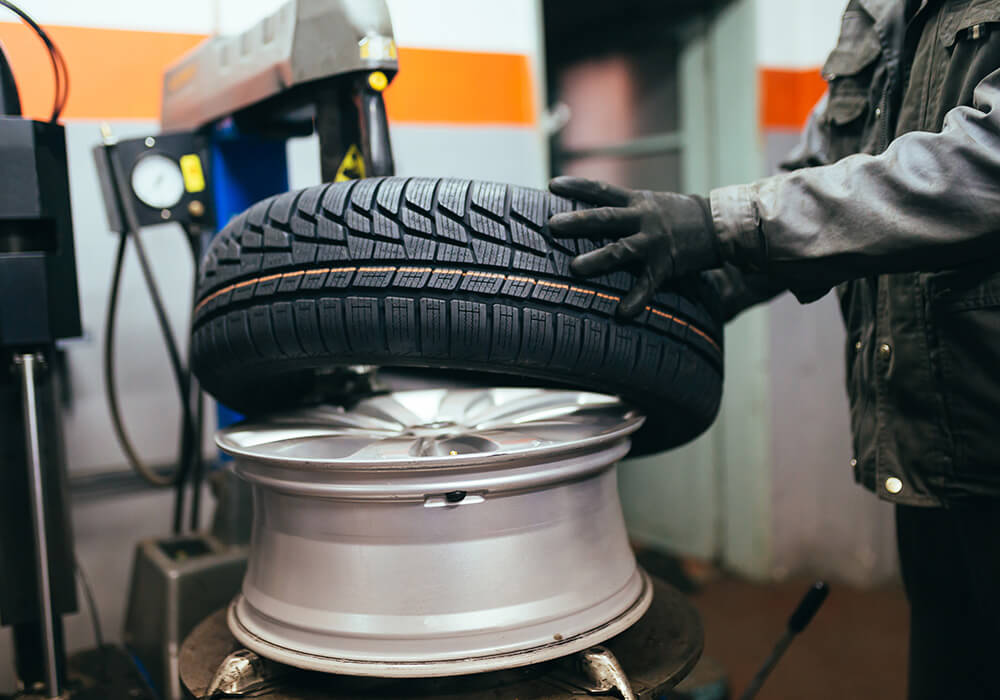Experience Accuracy with GMC Tire Service at Morris Tires
Experience Accuracy with GMC Tire Service at Morris Tires
Blog Article
Tire Solution: The Effect of Climate Condition
When it pertains to making certain optimum efficiency and safety and security when driving, understanding the impact of climate conditions on tire solution is essential. From scorching heat to icy roads, each weather component can substantially influence tire performance and general driving experience. By delving right into the results of varying climate condition on tires, vehicle drivers can gain beneficial insights that might enhance their automobile's performance and durability. In this conversation, we will discover the elaborate relationship between weather and tire service, dropping light on the importance of weather-specific tire maintenance practices and factors to consider.
Warm and Tire Efficiency
When subjected to high temperatures, tires experience changes in performance that can dramatically influence automobile security and handling. The warm generated from extended driving or hot weather conditions causes the tire rubber to soften, leading to lowered step life and increased wear.

Cold Weather Condition Effects
Cold climate problems can have a significant influence on tire performance and security. As temperatures decrease, tire rubber can solidify, bring about decreased traction on icy or snow-covered roadways. In chilly weather, tires might also shed air pressure extra rapidly, which can affect taking care of and fuel efficiency. Furthermore, cold temperatures can cause tire sidewalls to stiffen, enhancing the threat of damages from pockets or various other roadway threats.
To alleviate the results of winter on tires, it is important to consistently check tire stress and inflate them to the manufacturer's recommended levels. Utilizing wintertime or all-season tires created for winter problems can also improve traction and grip on icy or snowy roads. Correct tire upkeep, including regular examinations for wear and damages, ends up being a lot more crucial during chillier months to ensure my review here optimal performance and safety.
Rainy Issues Influence
Tires with worn-out footsteps are a lot more prone to hydroplaning, where a layer of water develops up in between the tire and the road surface area, leading to loss of grip. To battle this, chauffeurs must consistently evaluate their tires for sufficient tread depth and take into consideration spending in tires specifically made for wet problems.
Moreover, wet weather condition can also lower presence, making it challenging for drivers to see the road ahead clearly (GMC Tire Service). In such conditions, it is important to readjust driving speeds as necessary and keep a risk-free following distance to permit sudden stops. Appropriately inflated tires can likewise assist in preserving control on damp roadways by providing far better handling and grip
Snow and Tire Safety
When driving in snowy conditions, having the ideal tires can make a considerable difference in safety and performance. Wintertime tires are designed with special rubber compounds and step patterns to give far better traction on snow and ice compared to all-season tires.

It is important to follow maker instructions when setting up and using tire that site chains to prevent damages to the tires and car. By selecting the ideal tires, keeping proper inflation, and considering added traction aids like tire chains, motorists can enhance their this article safety and security when navigating snow-covered roads.
Weather-Related Tire Maintenance
Weather-related tire maintenance encompasses a variety of practices aimed at ensuring ideal tire feature and long life in various climate circumstances. One crucial element of weather-related tire maintenance is tire pressure law. Examining tire tread consistently and changing tires when step wear gets to a particular depth is crucial for keeping grip and security in negative weather.
Conclusion
To conclude, weather have a considerable impact on tire efficiency and safety. From warm impacting tire stress and wear to winter decreasing grip, it is important to think about the weather when maintaining and making use of tires. Stormy problems can lower hold and cause hydroplaning, while snow can raise the danger of crashes if tires are not properly geared up. Weather-related tire upkeep is important in making sure optimum performance and safety on the roads.
In this discussion, we will explore the elaborate connection in between weather condition problems and tire service, losing light on the importance of weather-specific tire maintenance practices and considerations.

Report this page